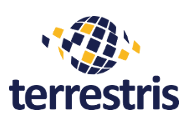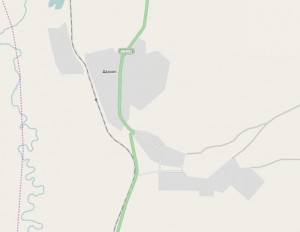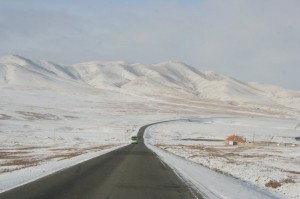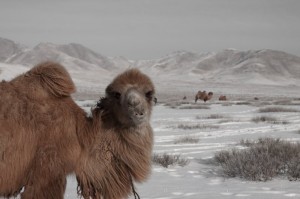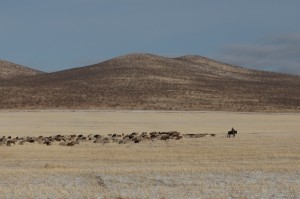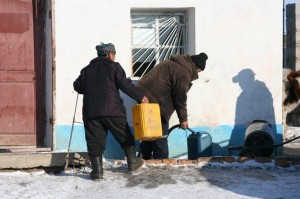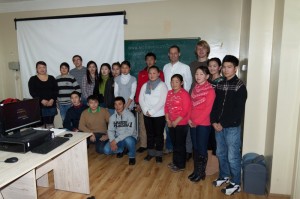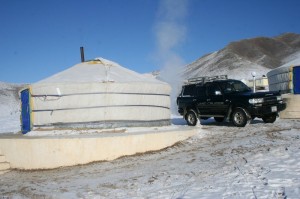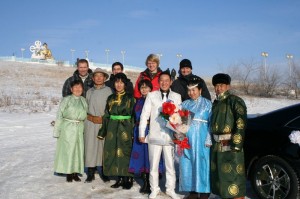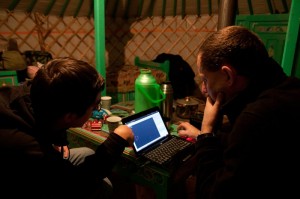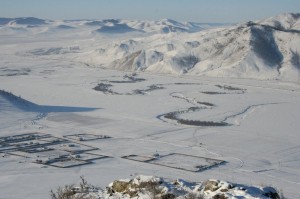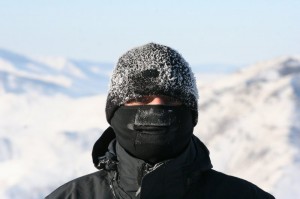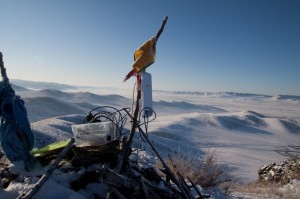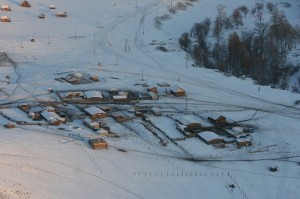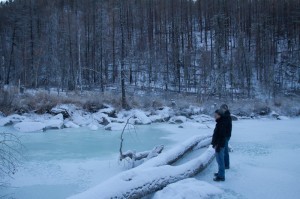Successful trip to Mongolia
At the beginning of December 3 people from terrestris went to Mongolia to conduct a geodata management workshop in the context of the project “Integrated Water Ressources Management in Central Asia: Model Region Mongolia (MoMo)”. The initial article can be read in our news section. Now we would like to report on our activities and experiences during the 2 week trip and also share some photos with you.
When someone from Europe travels to Mongolia in December then one topic is predominant: The cold. Yes, it is very cold but to our surprise it was quite easy to endure -20°C and even -35°C, the minimum we experienced, with regular hats, jackets, mittens and long underwear. It is important not to stand around but to keep moving.
The first day in Ulan Bator was spent shopping because we needed a local mobile phone card, some batteries as well as a plastic box for our data transmitting technology we were set to test in the Sognegor Valley. Shopping always takes quite some time which may also be due to the language barrier.
On the second day our driver Natsga took us in his all terrain vehicle to Darkhan, the second largest Mongolian city located approximately 250 km to the north of Ulan Bator. The computer room designated for the workshop was prepared by the terrestris-team by installing the necessary software programs QGIS and JOSM. The workshop was opened by the MoMo project-coordinator, the german ambassador to Mongolia and the director of the Technical University of Darkhan. See also our first report on the trip to Mongolia.
On the first day of the workshop there was a general introduction to geodata and geographical information systems (GIS) while the second day was designated to practical excercises using the free desktop GIS Quantum GIS. During the following three days practical mapping excercises took place the results of which were uploaded to the OpenStreetMap (OSM) platform.
OSM is a free wiki world map that is being compiled by volunteers all over the world using GPS devices amongst other technologies. The workshop is deemed a success. Up to the workshop all participants were unfamiliar with the OpenStreetMap project and during the 5 days a fundamental understanding for geodata management could be generated as well as filling the map of Darkhan with information. The corresponding before/after images speak for themselves. In addition a number of lecturers from the Agricultural and the Technical University of Darkhan participated in the workshop who intend to offer courses of their own with some of the content presented in our workshop. For this kind of endeavour the OpenStreetMap platform is perfectly suited since it is available to interested people at all times.
The last two days of the trip to Mongolia the terrestris-team spent in the Sognegor Valley where a number of MoMo sub projects are working. Besides exploring the valley we tested some modern data transmission technology. In this case it was special wireless LAN (WLAN) hardware operating at 5 GHz that allows high data throughput while using comparatively little energy. The test entailed the transmission of webcam photos from a mountain to a yurt over a distance of approximately 2 km. At -30°C the batteries lasted just under 4 hours and a total of 14 MB was transmitted. This test is also deemed a success and the team was especially impressed with the robustness and ease of use of the technology that has a phenomenal value for money ratio. At this point we would like to thank Prof. Dr. Christof Huebner from the Mannheim University of Applied Sciences as well as Mr. Bernd Strehhuber from the company plan b. solutions GmbH, who provided us with the technology.
